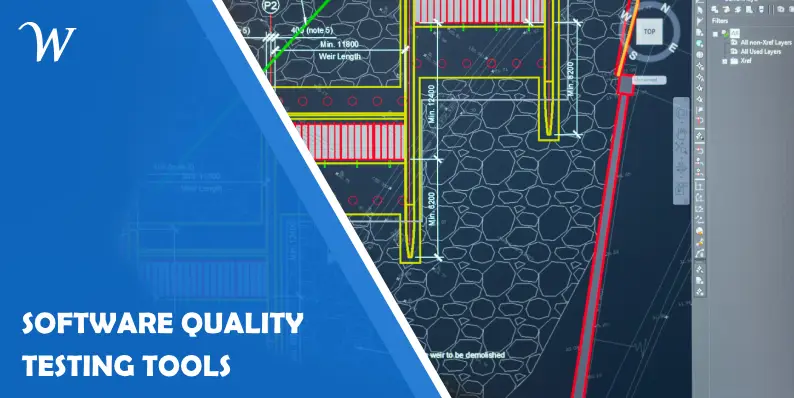Integrating software quality testing tools into your CI/CD pipeline is crucial for ensuring the reliability and integrity of your software releases. Leveraging tools for QA testing can automate the validation process, eliminating manual interventions and streamlining continuous delivery. Popular methods include implementing automated unit tests, GUI tests, and API tests, all of which can be configured to run within the pipeline.
Quality in DevOps hinges on integrating automated testing tools to maintain consistency and speed. By incorporating effective QA strategies, teams can be more agile and responsive to issues, reducing the time from code commit to production release. Exploring tools for QA testing can significantly enhance the efficiency and accuracy of your CI/CD pipeline.
Setting up a Continuous Integration/Continuous Delivery Pipeline
A well-structured CI/CD pipeline ensures seamless code integration, testing, and deployment, significantly enhancing the quality and efficiency of software development. Key aspects include suitable tools, effective automation, and robust feedback mechanisms.
Understanding CI/CD and DevOps
Continuous Integration/Continuous Delivery (CI/CD) embodies a set of practices aimed at integrating and deploying code changes more frequently and reliably. DevOps complements these practices by fostering better collaboration between development and operations teams. Together, CI/CD and DevOps create an automated workflow allowing developers to integrate code into a shared repository frequently, quickly identifying and resolving issues.
Key Benefits:
- Frequent Deployments: More reliable and less stressful releases.
- Increased Automated Testing: Early detection of defects.
- Improved Team Collaboration: Developers and operators work in tandem.
Selecting the Right CI/CD Tools
Choosing the appropriate tools is crucial for building a robust CI/CD pipeline.
Key Considerations:
- Integration Capabilities: Ensure tools integrate seamlessly with your existing workflow.
- Scalability: Opt for tools that can scale with project growth.
- Community and Support: Tools with a strong user base and support ecosystem are preferable.
Integrating Version Control Systems
Version control is the backbone of any CI/CD pipeline. It manages code changes and ensures collaboration among team members. Git is the most commonly used version control system due to its flexibility and distributed nature.
Steps to Integrate:
- Repository Setup: Create a central repository.
- Branch Management: Implement a branching strategy.
- Commit Practices: Encourage regular commits with meaningful messages.
Automating Builds and Deployments
Automation is at the heart of CI/CD pipelines, reducing manual intervention and the risk of human error.
Automation Steps:
- Build Automation: Set up tools to automatically compile and package code.
- Testing Automation: Integrate automated tests to run on every build.
- Deployment Automation: Deploy the latest builds to staging or production environments.
Establishing Feedback Loops
Effective feedback loops are vital for the continuous improvement of software. They provide developers with insights into code quality, helping to quickly identify and rectify issues.
Implementing Feedback Mechanisms:
- Automated Testing Feedback: Immediate results from unit, integration, and UI tests.
- Code Review Tools: Use different tools for peer reviews.
- Monitoring and Logging: Integrate monitoring tools to track application performance and logs.
Incorporating Quality Assurance in the CI/CD Process
Integrating quality assurance (QA) in a CI/CD pipeline enhances the efficiency and reliability of the software delivery process. It involves automating testing tasks, selecting appropriate tools, and meticulously analyzing test results. These elements ensure accurate validation of the product before deployment.
Designing Test Automation Strategies
Effective test automation strategies are vital. These strategies often follow the testing pyramid concept, emphasizing more unit tests over fewer end-to-end tests to ensure reliability across the pipeline.
Developers should plan to incorporate various tests, including unit tests, integration tests, and regression tests. Unit tests, running in isolation, verify individual code components. Integration tests check the interaction between different modules, while regression tests ensure that recent code changes have not disrupted existing functionality.
Implementing continuous testing across these various levels helps maintain high-quality releases.
Selecting and Configuring Testing Tools
Selecting suitable testing tools is crucial for automating and integrating QA in the CI/CD process.
Configuring these tools to work seamlessly within your pipeline ensures automated execution of test cases. The right configuration facilitates parallel tests, saving time and improving efficiency.
Managing Test Environments and Data
Managing test environments and data is a fundamental aspect of integrating QA into the CI/CD pipeline. A consistent test environment that mirrors the production setup is essential for accurate test results.
Utilizing virtual machines or containers helps create scalable and reliable environments. Test data should be managed with the same rigor, ensuring access to relevant and accurate data sets.
Configuring different environments for varied types of testing, such as performance tests, load testing, and stress testing, ensures comprehensive coverage of all potential issues before release.
Executing and Monitoring Tests
Executing and monitoring tests are ongoing tasks within the CI/CD pipeline. Automated test suites, once configured, should run at every code commit to provide continuous feedback.
Ensuring real-time feedback to developers and QAs maximizes efficiency. Continuous monitoring helps in identifying flaky tests or bottlenecks promptly, facilitating swift resolution and maintaining consistent quality.
Analyzing Test Reports and Metrics
The final step in integrating QA into the CI/CD pipeline involves analyzing test reports and metrics.
Metrics such as test coverage, pass/fail rates, and test execution times are key indicators of software quality. These metrics guide further improvements in both the codebase and testing processes.
Regularly reviewing these reports with both developers and qa testers helps align the development lifecycle with the goals of the QA strategy for higher accuracy and reliability in software releases.
Conclusion
Integrating software quality testing tools into your CI/CD pipeline is essential for maintaining robust and reliable code.
Automated testing reduces manual intervention and ensures consistent quality checks, ultimately streamlining the development lifecycle.
This approach ensures that software releases are stable, efficient, and meet the required standards.
- Best Image Sizes for WordPress: Improve Speed and Quality - December 5, 2024
- How to Integrate Software Quality Testing Tools Into Your CI/CD Pipeline - July 22, 2024
- 15+ Best Free WordPress Gutenberg Themes 2019 - March 8, 2019
